EPF Expeditionary Transport Vessel (USA)
Target - speed
In the past, the US Army, Navy and Marine Corps were actively working on the issue of increasing the speed of the transfer of troops to remote theaters of military operations. The army did this in the framework of Theater Support Vessel, while the Navy and the ILC had their own project, High Speed Connector. In 2004, it was decided to merge the two programs in order to obtain a common result.
Since that time, the work was carried out within the framework of the project Joint High Speed Vessel ("Single High-Speed Ship"). In 2015, the classification was changed - the new ships were renamed the Expeditionary Fast Transport (“Expedition High Speed Transport”). The ship’s shipboard numbers have changed accordingly.
The task of the JHSV / EPF program was to create a promising transport vessel, capable of transfering soldiers with equipment or comparable cargo to a distance of about 1000-1200 nautical miles in a minimum time. It was proposed to leave the transports unarmed, but to equip them with developed radio-electronic means similar to those used on warships.
JHSV research continued until 2007-2008, after which the development of a technical project started. A number of defense enterprises from the United States and other countries were attracted to the development work. Upon completion of this program stage, a contractor was selected for the construction of ships. The order was received by Austal USA, the ships were to be built at its plant in the city of Mobile (pc. Alabama).
According to the plans of that time, by the beginning of the twenties, 23 should be built for high-speed transport. In the future, the Pentagon was faced with a reduction in budgets, because of which he was forced to reduce the series to 14 units. Will order additional vessels after the completion of the construction of the planned - is unclear.
Aluminum Catamaran
The main objective of the JHSV / EPF project was to provide an advantageous combination of payload, speed and range. To this end, the project had to apply a number of characteristic ideas and solutions. First of all, it is a catamaran scheme and the widest possible use of light aluminum alloys. Also applied are original layout solutions that simplify the transportation of the required cargo or a large number of people.
The vessel with a total length of 103 m and a width of 28,5 m is built according to the catamaran scheme with a normal draft of 3,8 m. The displacement is 1515 t. The power plant and other units are placed inside the side hulls. The bridge connecting them is a superstructure with volumes for crew accommodation and payload. The superstructure has a characteristic box-like shape that provides maximum internal volumes. The wheelhouse is located on its roof.
The catamaran is equipped with four MTU 20V8000 M71L diesel engines with horsepower 12200. The power plant also includes four ZF 60000NR2H gearboxes and jet propulsion units. Such units allow the EPF to reach speeds up to 43 nodes. The maximum cruising range is defined in nautical miles 1200.
The on-board set of electronic equipment was developed by General Dynamics Mission Systems and is based on the OPEN CI complex, previously used on ships of the LCS family. The ship receives all the means necessary for driving and interacting with other ships fleet. At the same time, instrumentation does not include the systems necessary for working with weapons.
JHSV / EPF’s own armament includes only four tomb stands with M2 machine guns around the vessel’s perimeter. It is also possible to attract soldiers to combat work. However, according to the plans of the command, transport ships should not participate in the battles, they should rely on the assistance of warships.
Aft deck is given under the helipad. Next to it there is a place for helicopter transportation and a takeoff and landing control post. The vessel can work with any US Navy helicopters. The operation of the tiltrotor MV-22 on the vessel is excluded in order to avoid their mutual damage.
The ship’s own crew includes from 26 to 46 people depending on the task. Proper distribution of the available volumes made it possible to organize more comfort than on most US Navy ships.
Payload
Almost all internal volumes of the superstructure are given for the accommodation of people or goods. At the same time, the EPF can transport infantry battalions and its equipment to the battalion. The cargo deck is intended for vehicles, for the people - the cockpits above it. Total load weight approx. 600 t.
Kubriki equipped with 104 beds for a long stay of the landing. For short swims, a set of 312 seats is used. In the premises there are spaces for luggage and weapons. On board there is a supply of fresh water and provisions. The duration of the voyage with a landing party from 312 people is limited to 4 days. It is possible to sail for a duration of 14 days - in this case only the 104 person is transported.
For equipment and armaments, a cargo deck is intended for a length of more than 70 m, a width of 26 m and a height of 4,7 m. The total deck area is approx. 1900 sq.m. Means of securing goods in the field are provided. Access to the cargo deck is provided by a large aft hatch. Loading equipment is carried out on its own using a folding aft ramp mounted on the starboard side. The durability of the ramp ensures loading of any equipment, including tanks. On the port side of the stern there is a crane for non-self-propelled cargoes. The crane and ramp can be used when working with other vessels.
The main task of the EPF is the transportation of soldiers and vehicles. At the same time it is possible to use ships in special missions. An EMU type hospital or other special equipment can be deployed on the cargo deck.
14 ships
22 July 2010 in Mobile laid the lead ship of the new project - USNS Spearhead (JHSV-1). Subsequently, it received a new tail number T-EPF-1. In September, 2011 was launched, and at the end of 2012 it was handed over to the Shipping Command. Currently, this vessel continues to serve and participates in various combat training activities.
Since 2011, another 11 of JHSV / EPF type vessels has been laid. To date, the customer has received 10 ships, including the head ship. Ships No. 11 and 12 are at different stages of construction. At the end of March, a contract for the last two vehicles appeared. Their construction will begin in 2019-2020.
The construction of the lead vessel cost $ 214 million. The launch of the series reduced this parameter to 180 millions. In 2015, the lead ship suffered significant damage during operation, and repairs required additional expenses. In addition, as a result of these events, an order for updating the project with a view to strengthening the design appeared. Together with the Spearhead upgrades are four production vessels. All this further increased the cost of the program.
Already at the stage of sea trials, the lead ship USNS Spearhead (T-EPF-1) confirmed the fundamental possibility of solving the problems posed. The vessel successfully developed the declared speed of more than 40 nodes and ensured the transportation of the specified cargo. At the same time, some weaknesses were identified. So, acceleration to the maximum speed is possible only when the waves are no more than 3 points; with 5 points, speed is limited to 3 nodes. On strong waves, the catamaran is prone to greater pitching than ships with a single hull structure. There were also complaints about the comfort in the compartments for the landing. Later, there were problems with the strength of the structure.
Program results
To date, the US Navy managed to get 10 high-speed transport vessels of a new type, it is expected the delivery of another 4. Over the past years, the fleet, the army and the International Labor Commission managed to test such vessels during various exercises and to give them an assessment. The results of operation are still mixed. With a number of significant advantages, EPFs retain significant drawbacks. Nevertheless, despite the corrected or remaining problems, such transports are capable of solving assigned tasks and ensuring the rapid redeployment of subunits.
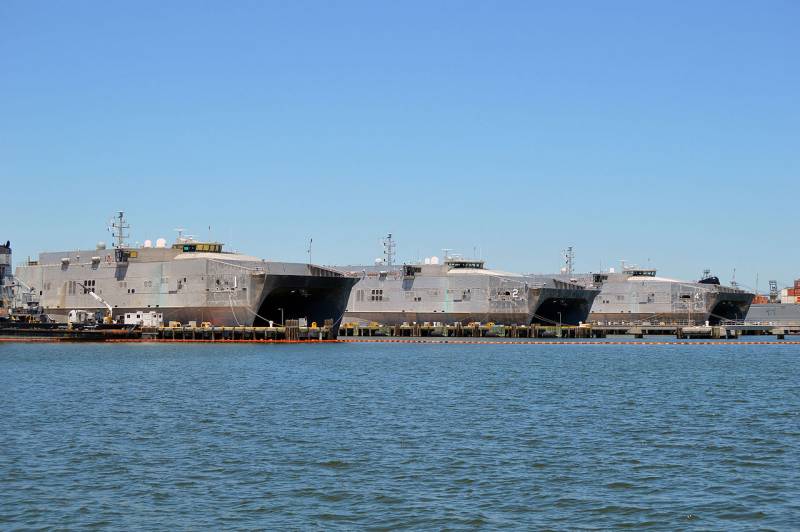
USNS Spearhead (T-EPF-1) ships, USNS Choctaw County (T-EPF-2) and USNS Fall River (T-EPF-4) based on Little Creek, May 2015.
Spearhead ships regularly participate in exercises. For example, the ship USNS Yuma (T-EPF-8) recently went to the port of Odessa - he was to participate in the exercises Sea Breeze 2019. Other representatives of the project also do not stand idle and provide training for sailors, soldiers and marines, as well as participate in patrols and other activities.
The American concept has already interested the foreign military. In 2014, Austal received an order from the KVMS Oman for the construction of two ships of the HSSV type. The HSSV project is based on the American JHSV / EPF, but provides for the construction of a smaller vessel with a 320 tonnage. Both vessels were built in Australia and were transferred to the customer in 2016.
As part of the Expeditionary Fast Transport program, the army, the KMA and the US Navy have developed and implemented a fundamentally new concept of a transport vessel for the rapid transfer of units. Not all the results of the program coincided with expectations, but in the existing form of the court found application in the structure of the transport fleet of the Navy. In addition, a new concept interested third countries. The construction of the first EPF series continues, and it cannot be excluded that after its completion a new contract will appear on similar vessels or on their analogues of another project.
- Ryabov Kirill
- US Navy
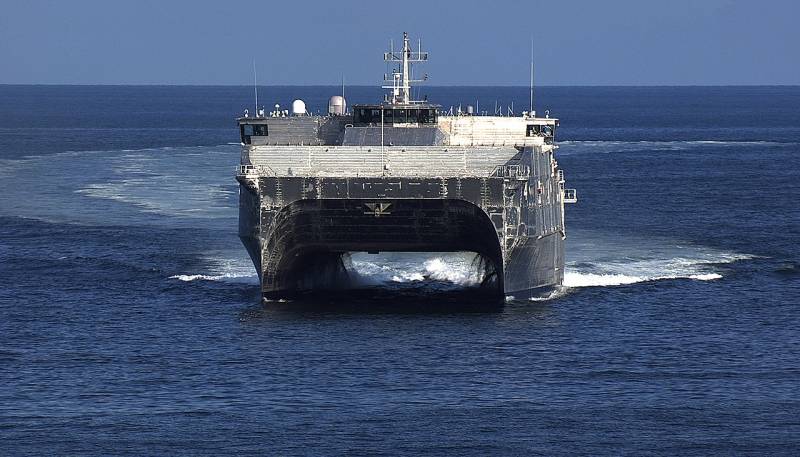
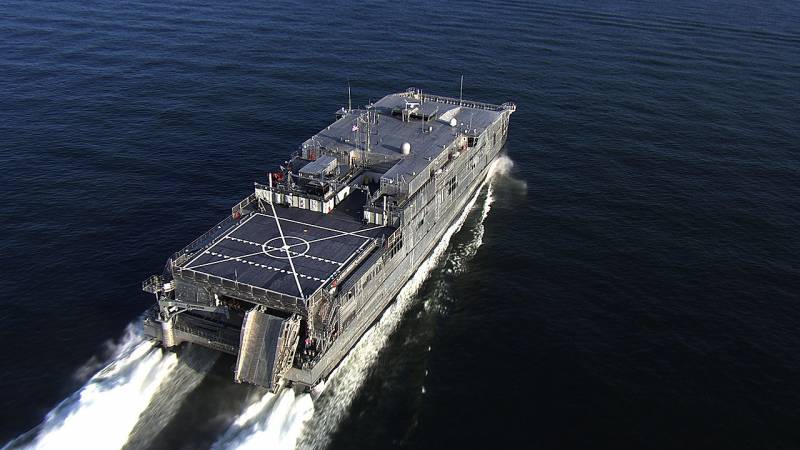
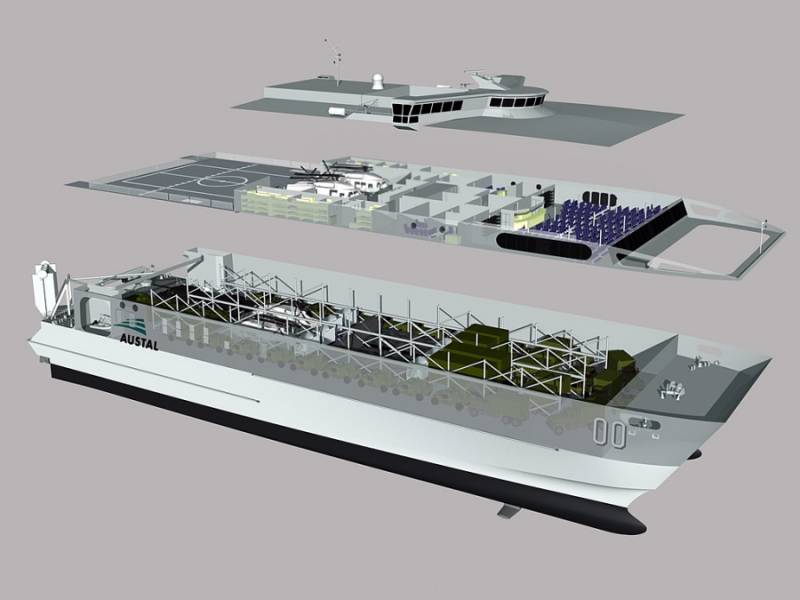
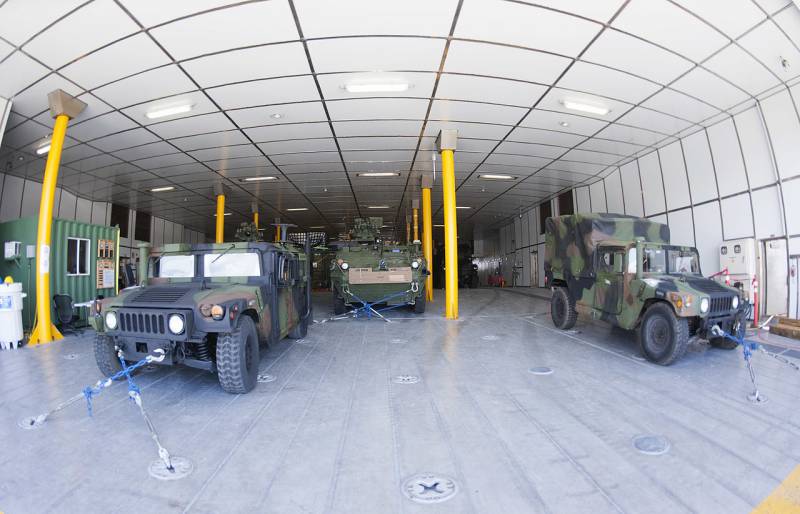
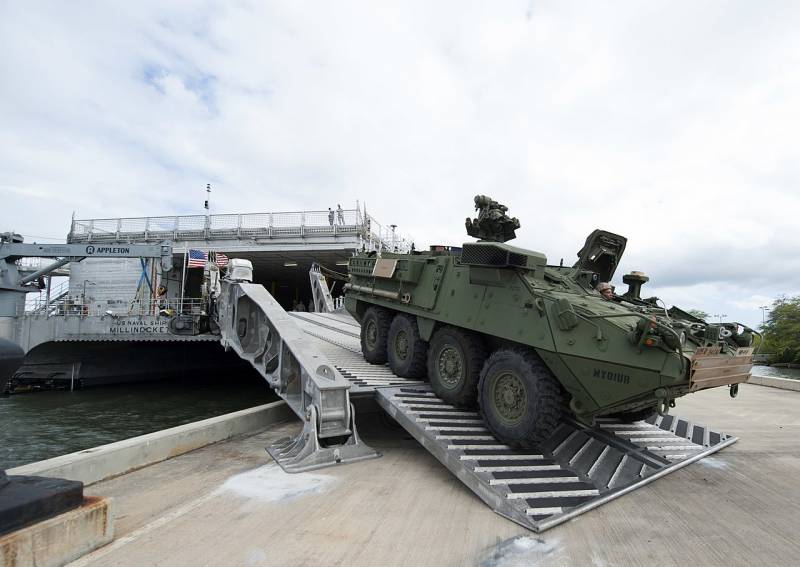
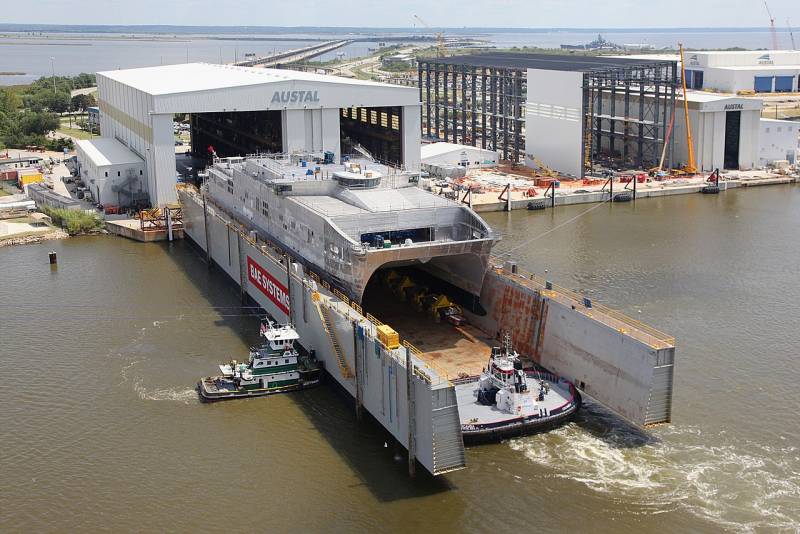
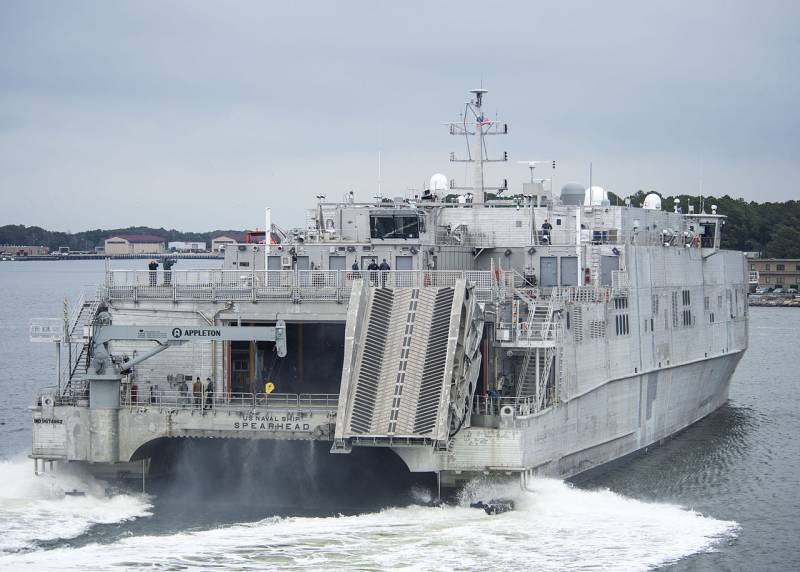
Information